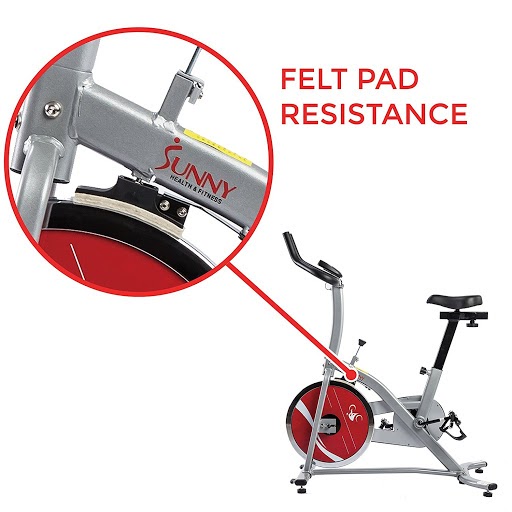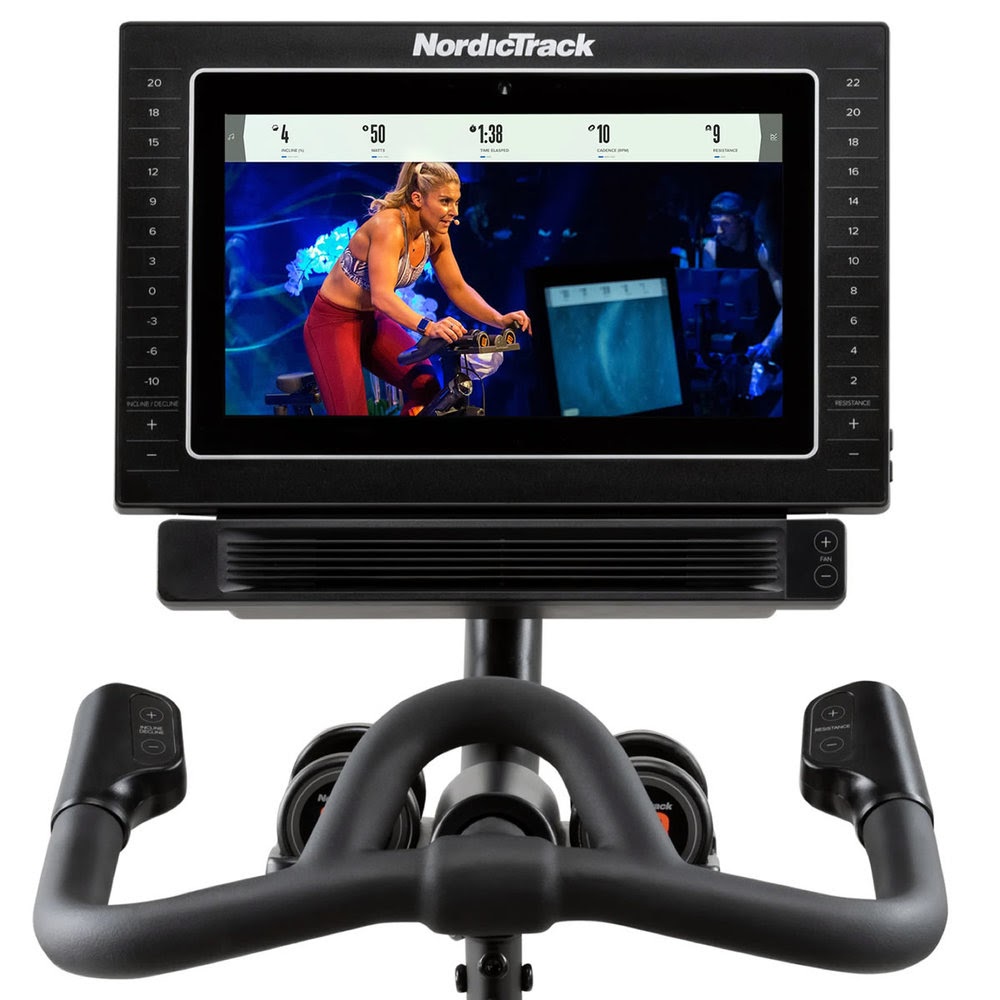There are two main types of resistance on an exercise bike: Friction Resistance and Magnetic Resistance. Friction resistance is less expensive and often found on lower-priced bikes. Magnetic resistance is quiet but more expensive to manufacture, so it’s often found on upgraded bikes. Let’s take a closer look at both.
Friction Resistance
Friction Resistance is created when wool pad(s) press against the flywheel to resist the motion, which makes it harder to pedal. Friction resistance is created in two ways:

- Single pad: A single pad sits on top of the flywheel. When a rider increases resistance, the pad is pressed down harder against the flywheel. When the rider decreases resistance, the pad moves up off the flywheel.

- Calliper pads: Similar to brake pads on a bike, calliper resistance is created when two pads on either side of the flywheel squeeze the wheel to impede its motion.
Benefits of Friction Resistance:
- Friction resistance is less expensive. It is easier to manufacture and is often found on lower-priced bikes.
- Friction resistance is usually generated via a Resistance Knob on the bike that increases and decreases the tension. It is easy to design and use, but less precise.

Drawbacks of Friction Resistance
- Can be noisy. Friction resistance makes more noise as the flywheel passes through the pads. It can also create a squeaking noise if pads are old or improperly lubricated.
- Requires maintenance. Pads must be lubricated and re-aligned from time to time. Calliper pads often move out of alignment over time.
- Requires replacement. Pads will wear out and need to be replaced over time.
- Harder to measure. It is very difficult to measure how much pressure is being applied to the flywheel at any given time. Also, as the pads wear down, more pressure is required to slow the flywheel. This means that preset levels are not an option with friction resistance.
Magnetic Resistance
Magnetic Resistance is created when magnets adjacent to the flywheel create a current which resists the rotation of the wheel. When resistance is increased, the magnetic current increases, which creates more resistance on the flywheel. When resistance is decreased, the magnetic current is reduced. Magnetic resistance is usually managed via digital buttons, either on the console or handlebars. While it can be controlled via a resistance knob, it is slightly harder to navigate.

Benefits of Magnetic Resistance:

- Magnetic resistance is silent. There is no contact between the flywheel and the magnets. All resistance is created by the opposing polarity. This allows the flywheel to spin without creating any noise.
- Less maintenance. If installed correctly, magnetic resistance should not require maintenance. There is no wear and tear on either the flywheel or the magnets.
- No lubrication required. No dust is created due to friction, so magnets do not require lubrication.
- Preset Levels are precise. Preset magnetic levels are measured by the strength of the magnetic current, so levels can be calibrated based on how many the manufacturer chooses to use.
- Preset Levels are easy to use. Since the resistance is a precise measurement, it is usually managed via buttons or controls on the console. This makes it very easy to manage resistance by the rider.
- Preset Levels are consistent. Rather than have to guess as to how much resistance you should add, preset levels are consistent, so you can find the same level each time.

